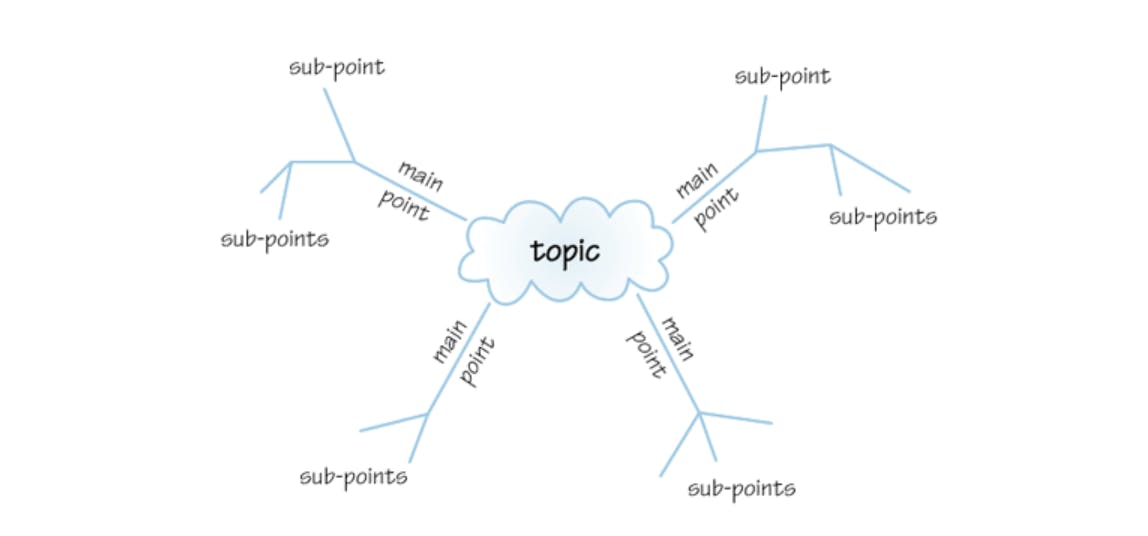Visual techniques Revision techniques
Developing visual material can help your recall and also be a quick way to show lots of information. Visualisation helps you remember (like when we try to picture where we’ve parked our car, and what's in our cupboards when writing a shopping list).
You can create diagrams and visual aids depicting your module materials and put them up around the house so that you are constantly reminded of your learning.
Mind maps
Mind maps help you to generate ideas and make associations. They can also act as a powerful memory aid in an exam because they are visual. Mind maps show the relationships between component topics within an overall subject area.

The main principles are as follows
- Note down points in a spray pattern, starting from the centre and working outwards.
- Keep your points brief – use key words, authors, theories or processes.
- Use lines to show connections between things.
- Be prepared to re-work the map until you are happy with the organisation.
- Include colour, symbols and pictures to make it more memorable.
Mind mapping is a useful way of organising your initial thoughts. Further examples can be found in Mind maps.
Try searching the internet for free mind map applications for your computer or, if you’d prefer, simply draw them by hand.
Learning posters
You may find that, rather than reducing notes to small summary cards, you prefer to produce large posters detailing key points on particular topics. Use flip-chart paper or stick several pieces of A4 together. Use pattern, colour, diagrams and drawings in your posters and display them in parts of your home where you might have an opportunity to gaze at them for a few minutes now and then and absorb the information. One student we know put them around the bathroom!
If you have a strong visual memory then lively posters really help the remembering process.